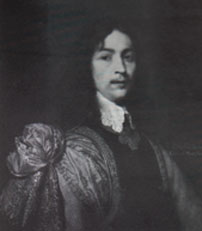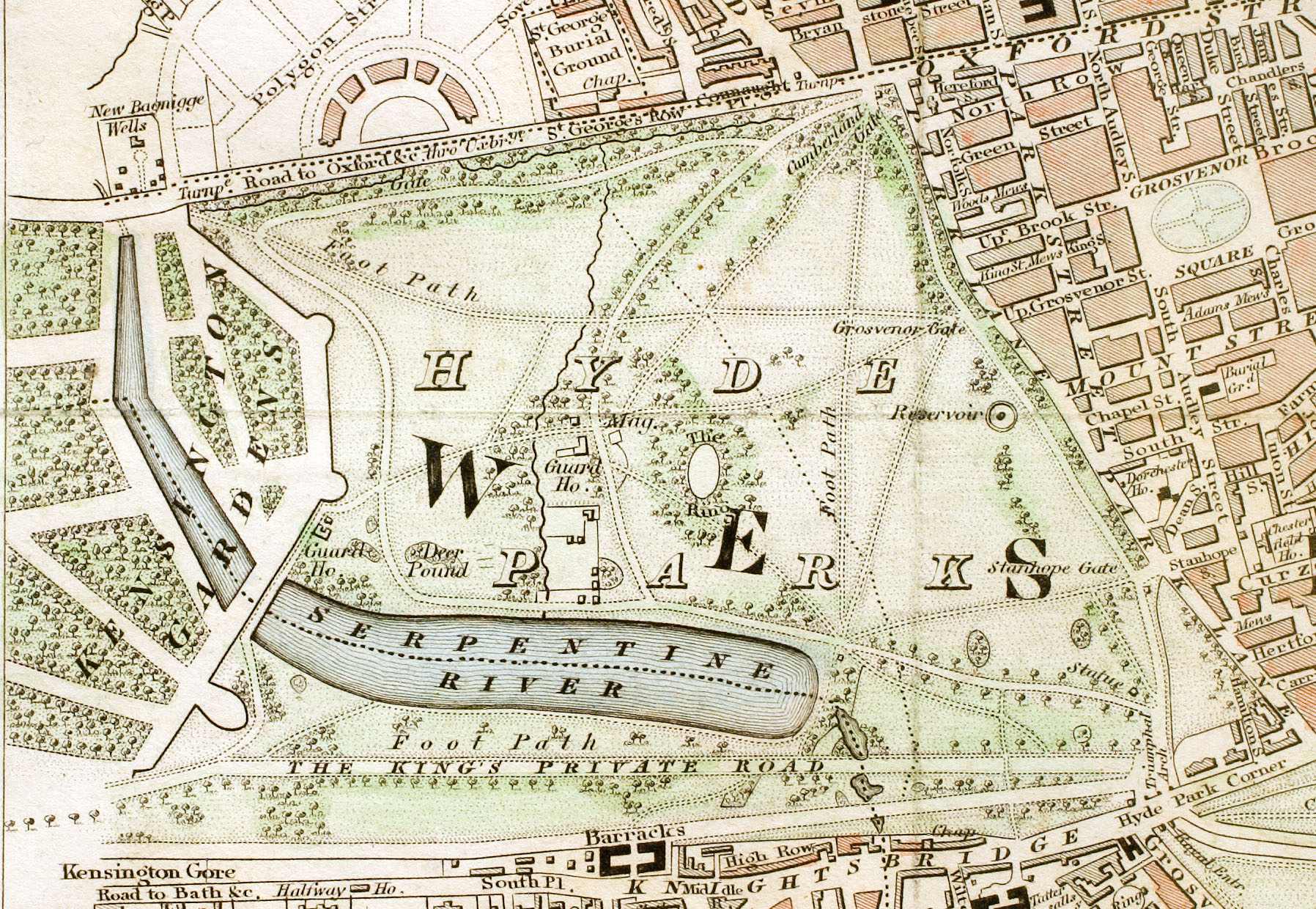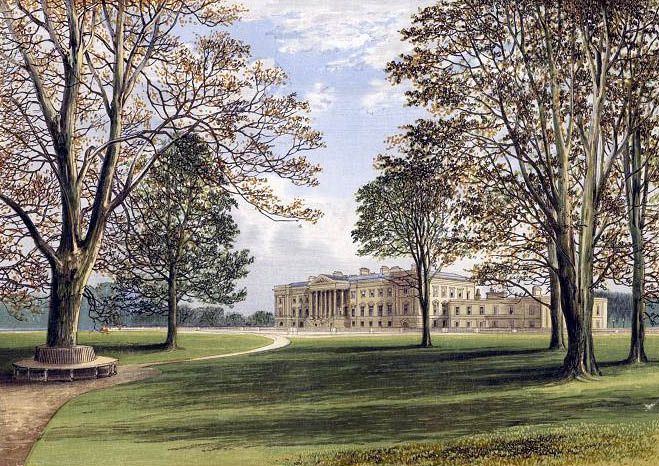|
Charles Gerard, 2nd Earl Of Macclesfield
Charles Gerard, 2nd Earl of Macclesfield ( 1659 – 5 November 1701), was an English peer, soldier and MP. Biography He was born in France, the eldest son of Charles Gerard, Baron Brandon (later 1st Earl of Macclesfield), and Jeanne, the daughter of Pierre de Civelle, equerry to Queen Henrietta Maria. He became an English national by Act of Parliament in 1677. By 1678 he was a lieutenant-colonel in Lord Gerard's Horse and a full colonel in 1679. That year he entered politics, being elected knight of the shire for Lancashire in both March and October, and again in 1681. Like his father Charles, the 1st Earl, he was involved in the intrigues of the Duke of Monmouth. In 1685 he was sentenced to death for being a party to the Rye House Plot, but was pardoned by Charles II. In 1689 he was re-elected Member of Parliament for Lancashire, which he represented until 1694, when he succeeded to his father's peerage. He was Custos Rotulorum for Lancashire from 1689 until his death in 1 ... [...More Info...] [...Related Items...] OR: [Wikipedia] [Google] [Baidu] |
Charles Gerard, 1st Earl Of Macclesfield
Charles Gerard, 1st Earl of Macclesfield, PC (c. 16187 January 1694) was an English aristocrat, soldier and courtier. He fought as a Royalist during the English Civil War, before spending a period in exile under the Commonwealth. After returning to England upon the Stuart Restoration in 1660, he was made Earl of Macclesfield by Charles II in 1679. He later fell out of royal favour and was declared an outlaw, but after a second period on the continent, he returned to England in 1688 in the retinue of William of Orange. He received several offices under the crown, including serving as the last Lord President of Wales in 1689. Early life The eldest son of Sir Charles Gerard, he was a member of an old Lancashire family, his great-grandfather having been Sir Gilbert Gerard (died 1593) of Ince, in that county, one of the most distinguished judges in the reign of Elizabeth I. His mother was Penelope Fitton, sister and co-heiress of Sir Edward Fitton, of Gawsworth, Cheshire. Nothi ... [...More Info...] [...Related Items...] OR: [Wikipedia] [Google] [Baidu] |
Colonel Henry Brett
Henry Brett (died 1724) was an English man about town, an army officer and Tory politician. He was involved in the theatrical world, and an associate of the playwrights Joseph Addison and Richard Steele. Life He was the eldest son of Henry Brett of Cowley, Gloucestershire. Colley Cibber, who was a close friend, says that the young Brett was sent to Oxford and entered at the Temple, but was an idler about town in 1700, when he married Anne, the divorced wife of Charles Gerard, 2nd Earl of Macclesfield, who succeeded to the title in 1693. She was daughter of Sir Richard Mason, knight, of Sutton, Surrey, and married the Earl of Macclesfield, then Lord Brandon, in 1683, but separated from him soon after. She had two illegitimate children, one of whom, by Richard Savage, 4th Earl Rivers, was possibly the poet Richard Savage. The countess was divorced in 1698, when her fortune was returned to her, and two years later she married Henry Brett. He was very handsome, and the lady's sympath ... [...More Info...] [...Related Items...] OR: [Wikipedia] [Google] [Baidu] |
James Stanley, 10th Earl Of Derby
James Stanley, 10th Earl of Derby (3 July 16641 February 1736), styled The Honourable until 1702, was a British peer, soldier and politician. He became Captain of the Yeomen of the Guard and served in the Scots Brigade, Anglo-Dutch Brigade. Early life Derby was the second son of Charles Stanley, 8th Earl of Derby, and Dorothea Helena Kirkhoven, born on 3 July 1664.''Burke's'': 'Derby'. He was elected to the British House of Commons, House of Commons for Clitheroe (UK Parliament constituency), Clitheroe in 1685, a seat he held until 1689, and then represented Preston (UK Parliament constituency), Preston from 1689 to 1690 and Lancashire (UK Parliament constituency), Lancashire from 1695 to 1702. He held the post of Groom of the Bedchamber to King William III from 1689 to 1702. Military career Having served in the Scots Brigade, Anglo-Dutch Brigade with William III in Holland and Flanders (1686–88), he was commissioned as a Captain (British Army and Royal Marines), captain and ... [...More Info...] [...Related Items...] OR: [Wikipedia] [Google] [Baidu] |
Charles Hoghton
Charles is a masculine given name predominantly found in English and French speaking countries. It is from the French form ''Charles'' of the Proto-Germanic name (in runic alphabet) or ''*karilaz'' (in Latin alphabet), whose meaning was "free man". The Old English descendant of this word was '' Ċearl'' or ''Ċeorl'', as the name of King Cearl of Mercia, that disappeared after the Norman conquest of England. The name was notably borne by Charlemagne (Charles the Great), and was at the time Latinized as ''Karolus'' (as in ''Vita Karoli Magni''), later also as '' Carolus''. Etymology The name's etymology is a Common Germanic noun ''*karilaz'' meaning "free man", which survives in English as churl (James (< Latin ''-us'', see Spanish/ Portuguese ''Carlos''). According to Julius Pokorny, the historical linguist and Indo-European studies, Indo-Europeanist, the root meaning of Charles is "old man", from Proto-Indo-European language, Indo-European *wikt:Appendix:Proto-Indo-E ... [...More Info...] [...Related Items...] OR: [Wikipedia] [Google] [Baidu] |
Thomas Preston (of Holker, Elder)
Thomas Preston may refer to: Politicians * Thomas Preston (MP for Derby), see Derby * Thomas Preston (died 1604), MP for Knaresborough * Thomas Preston of Gretton, MP for Northampton * Thomas Preston (MP for Newcastle-under-Lyme), in 1437 MP for Newcastle-under-Lyme * Thomas Preston, in 1452 MP for Wallingford * Thomas Preston (of Holker, elder) (1600–1679), English MP for Lancashire * Thomas Preston (of Holker, younger) (1647–1697), English MP for Lancaster * Thomas Hiram Preston (1855–1925), Ontario journalist and political figure * Thomas Hildebrand Preston (1886–1976), British diplomat Religion * Thomas Preston (monk) (1563–1640), English Benedictine monk * Thomas Scott Preston (1824–1891), Roman Catholic Vicar General of New York Others * Thomas Preston (composer) (died c. 1563), English composer * Thomas Preston (footballer) (1893–1971), Scottish footballer (Airdrieonians) * Thomas Preston (writer) (1537–1598), master of Trinity Hall, Cambridge and ... [...More Info...] [...Related Items...] OR: [Wikipedia] [Google] [Baidu] |
Sir Roger Bradshaigh, 1st Baronet
Sir Roger Bradshaigh, 1st Baronet (14 January 1628 – 31 March 1684) was an English politician who sat in the House of Commons from 1660 to 1679. Bradshaigh was the third but oldest surviving son of James Bradshaigh of Haigh Hall, Haigh, Lancashire, by Anne, daughter of Sir William Norris of Speke In 1660, he was elected member of parliament (MP) for Lancashire in the Convention Parliament. and was knighted on 18 June 1660. In 1661 he was re-elected MP for Lancashire in the Cavalier Parliament and sat until 1679. He served as High Sheriff of Lancashire for 1679 and was created baronet on 17 November 1679. Roger Bradshaigh developed coal and cannell pits under his Haigh Hall estate and the Great Haigh Sough, a tunnel to drain them, was driven under the estate between 1653 and 1670. Bradshaigh died at the age of 57 on a visit to Chester and was buried at Wigan. He had married Elizabeth, the daughter of William Pennington of Muncaster, Cumberland. They had four sons (only one ... [...More Info...] [...Related Items...] OR: [Wikipedia] [Google] [Baidu] |
Peter Bold
Peter Bold (c.1705–1762) of Bold Hall in Prescot, Lancashire, was a British landowner and Tory politician who sat in the House of Commons between 1727 and 1761. Biography Bold was the eldest son of Richard Bold, MP, and his wife Elizabeth Norton, daughter of Thomas Norton of Barkisland, Yorkshire. In 1704 as an infant, he succeeded to his father’s estates. He matriculated at Brasenose College, Oxford on 2 February 1722, aged 16. He married Anna Maria Sylvester, widow of Rev. Edward Sylvester of Barthwaite and daughter of Godfrey Wentworth of Woolley Park, Yorkshire. Bold was responsible for the building of Bold Hall in about 1732. It was designed and erected under the supervision of the Italian architect Giacomo Leoni and was a very substantial and uniform edifice, with fine stone columns and corresponding decorative dressings. At the 1727 British general election Bold was returned unopposed as Tory Member of Parliament for Wigan under an agreement made with Lord Ba ... [...More Info...] [...Related Items...] OR: [Wikipedia] [Google] [Baidu] |
Oxford University Press
Oxford University Press (OUP) is the publishing house of the University of Oxford. It is the largest university press in the world. Its first book was printed in Oxford in 1478, with the Press officially granted the legal right to print books by decree in 1586. It is the second-oldest university press after Cambridge University Press, which was founded in 1534. It is a department of the University of Oxford. It is governed by a group of 15 academics, the Delegates of the Press, appointed by the Vice Chancellor, vice-chancellor of the University of Oxford. The Delegates of the Press are led by the Secretary to the Delegates, who serves as OUP's chief executive and as its major representative on other university bodies. Oxford University Press has had a similar governance structure since the 17th century. The press is located on Walton Street, Oxford, Walton Street, Oxford, opposite Somerville College, Oxford, Somerville College, in the inner suburb of Jericho, Oxford, Jericho. ... [...More Info...] [...Related Items...] OR: [Wikipedia] [Google] [Baidu] |
Oxford Dictionary Of National Biography
The ''Dictionary of National Biography'' (''DNB'') is a standard work of reference on notable figures from History of the British Isles, British history, published since 1885. The updated ''Oxford Dictionary of National Biography'' (''ODNB'') was published on 23 September 2004 in 60 volumes and online, with 50,113 biographical articles covering 54,922 lives. First series Hoping to emulate national biography, biographical collections published elsewhere in Europe, such as the (1875), in 1882 the publisher George Murray Smith, George Smith (1824–1901), of Smith, Elder & Co., planned a universal dictionary that would include biographical entries on individuals from world history. He approached Leslie Stephen, then editor of the ''Cornhill Magazine'', owned by Smith, to become the editor. Stephen persuaded Smith that the work should focus only on subjects from the United Kingdom and its present and former colonies. An early working title was the ''Biographia Britannica'', the na ... [...More Info...] [...Related Items...] OR: [Wikipedia] [Google] [Baidu] |
Hyde Park, London
Hyde Park is a , historic Listed building#Heritage protection, Grade I-listed urban park in Westminster, Greater London. A Royal Parks of London, Royal Park, it is the largest of the parks and green spaces that form a chain from Kensington Palace through Kensington Gardens and Hyde Park, via Hyde Park Corner and Green Park, past Buckingham Palace to St James's Park. Hyde Park is divided by the Serpentine and the Long Water lakes. The park was established by Henry VIII in 1536 when he took the land from Westminster Abbey and used it as a hunting ground. It opened to the public in 1637 and quickly became popular, particularly for May Day parades. Major improvements occurred in the early 18th century under the direction of Caroline of Ansbach, Queen Caroline. The park also became a place for duels during this time, often involving members of the nobility. In the 19th century, the Great Exhibition of 1851 was held in the park, for which The Crystal Palace, designed by Joseph Paxt ... [...More Info...] [...Related Items...] OR: [Wikipedia] [Google] [Baidu] |
James Douglas, 4th Duke Of Hamilton
Lieutenant-General James Hamilton, 4th Duke of Hamilton and 1st Duke of Brandon (11 April 1658 – 15 November 1712), was a Scottish nobleman, soldier and politician. Hamilton was a major investor in the failed Darien scheme, which cost many of Scotland's ruling class their fortunes. He led the Country Party in the Parliament of Scotland and the opposition to the Act of Union in 1707. He died on 15 November 1712 as the result of a celebrated duel in Hyde Park, Westminster, with Charles Mohun, 4th Baron Mohun, over a disputed inheritance. Early life The eldest son of William Douglas, 1st Earl of Selkirk (who was created Duke of Hamilton for his lifetime and changed his surname to Hamilton in 1660), and his wife Anne, 3rd Duchess of Hamilton in her own right, Hamilton was born at Hamilton Palace, in Lanarkshire. He was a descendant through his mother of the Scottish House of Stewart and therefore had a significant claim to the thrones of both Scotland and England. He was ... [...More Info...] [...Related Items...] OR: [Wikipedia] [Google] [Baidu] |



